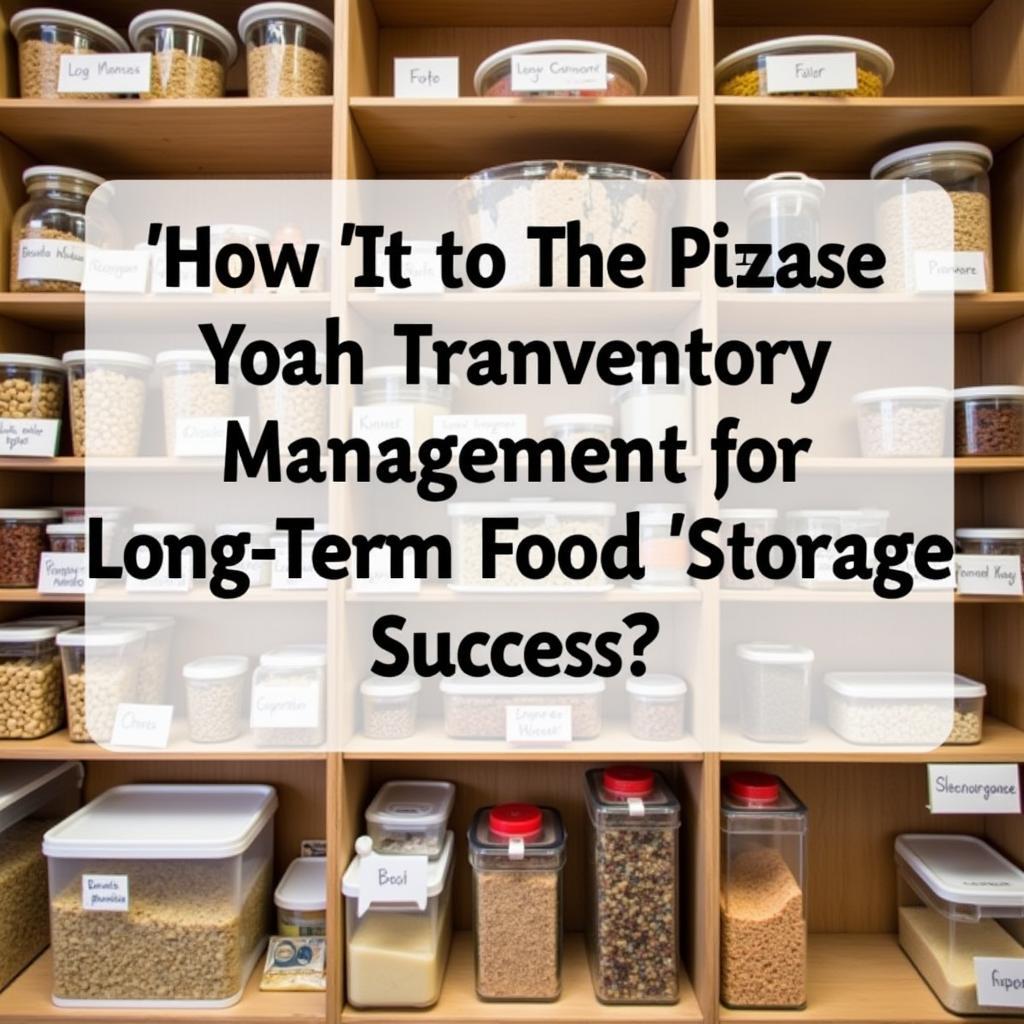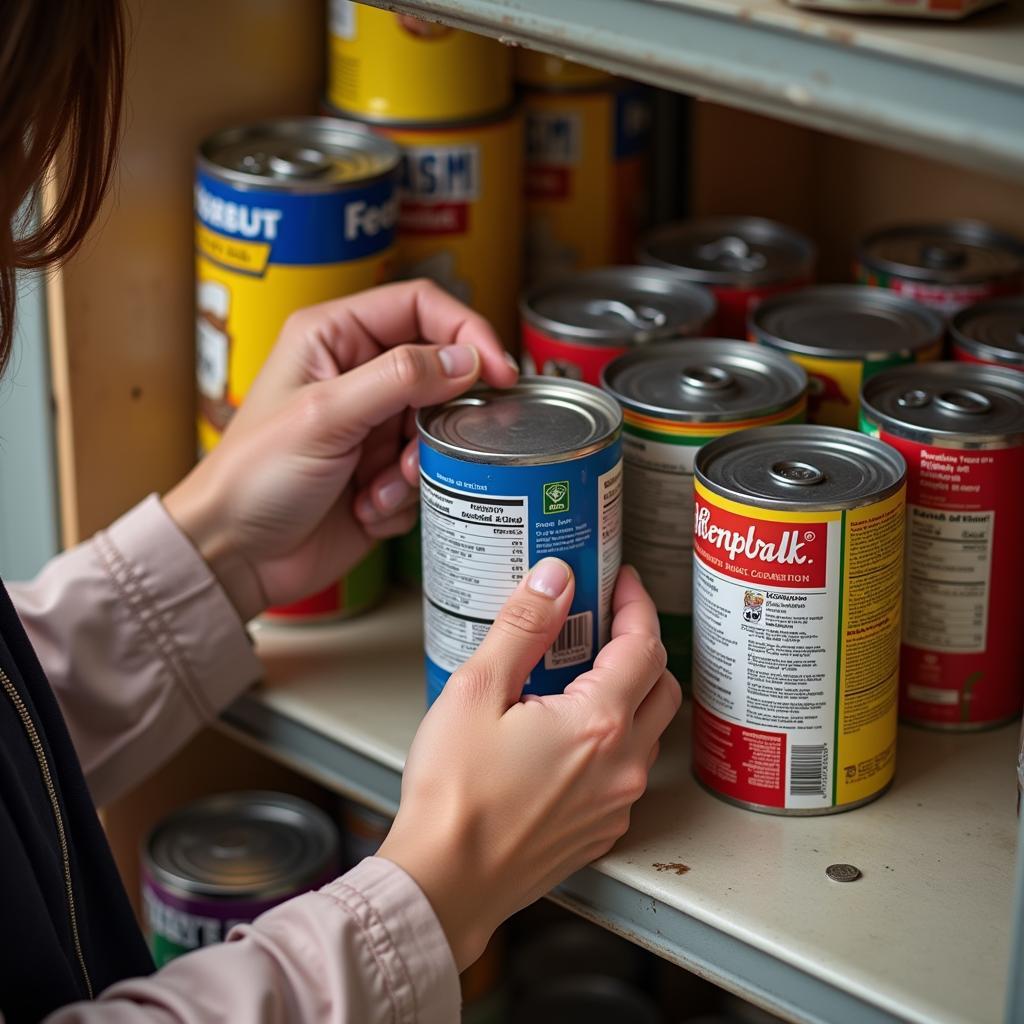Bulk Long Term Food Storage is a crucial aspect of preparedness, whether you’re facing an emergency, embracing a sustainable lifestyle, or simply want to save money on groceries. This guide explores everything you need to know about successfully storing food for extended periods, ensuring your family’s nutritional needs are met, no matter the circumstances.
Planning Your Long-Term Food Storage Strategy
Effective bulk long term food storage requires careful planning. Start by assessing your family’s dietary needs and preferences. Consider any special dietary requirements or allergies. Then, determine the quantity of food you’ll need to store based on the desired storage duration. Are you preparing for a short-term disruption or a more extended emergency? This will significantly impact the amount and types of food you choose. Remember, a diverse and balanced food supply is key for long-term health and well-being.
It’s important to choose storage methods that suit your space and budget. Do you have a dedicated pantry or limited storage area? Understanding your constraints will help you make informed decisions about containers, packaging, and organization. Thinking about making your own dog food for long-term storage? Check out our homemade dog food recipe book.
Choosing the Right Foods for Long-Term Storage
Not all foods are created equal when it comes to long-term storage. Focus on non-perishable items with a long shelf life. These include dried goods like beans, rice, and pasta, as well as canned goods like fruits, vegetables, and meats. Freeze-dried foods are another excellent option, offering high nutritional value and a remarkably long shelf life. Don’t forget about essential fats and oils, which are crucial for maintaining health during long-term storage scenarios.
Think about variety and incorporate foods your family enjoys. Long-term food storage shouldn’t be about mere survival; it should also maintain morale and provide a sense of normalcy. Consider adding comfort foods, treats, and spices to enhance your stored meals.
Packaging and Preserving Your Food Supplies
Proper packaging is crucial for maintaining the quality and safety of your bulk long term food storage. Choose airtight containers to prevent spoilage and protect against pests. Vacuum sealing is another effective method for extending the shelf life of dry goods and preventing oxidation. For items like grains and legumes, consider using oxygen absorbers to eliminate any remaining air and further extend their lifespan.
Rotation is a critical aspect of long term food storage. Implement a “first in, first out” system to ensure you’re consuming the oldest items before they expire. This prevents waste and ensures your food supply remains fresh and nutritious. Need durable containers for your bulk food? Take a look at our selection of food grade totes.
Storing Your Food Properly for Maximum Shelf Life
The location where you store your food significantly impacts its longevity. Choose a cool, dark, and dry location away from direct sunlight and extreme temperature fluctuations. Basements, pantries, and cool closets are ideal storage areas. Properly organizing your food supplies makes it easier to track inventory, rotate stock, and quickly access items when needed.
“Proper storage is paramount,” emphasizes renowned food preservationist, Dr. Evelyn Reed. “A well-organized and maintained storage area can significantly extend the shelf life of your food and prevent spoilage.”
 Organized Long-Term Food Storage Area
Organized Long-Term Food Storage Area
Maintaining and Monitoring Your Food Storage
Regularly inspect your food storage for signs of spoilage, pests, or damage. Replace any compromised items immediately. Keep a detailed inventory of your stored food, including purchase dates and expiration dates. This helps you track your stock and ensures you rotate your supplies effectively.
“Don’t just store it and forget it,” advises experienced prepper, Michael Davies. “Regular monitoring and maintenance are essential for ensuring the long-term viability of your food supply.”
Are you interested in acquiring bulk survival foods? Explore our options for survival food bulk.
Conclusion
Bulk long term food storage provides peace of mind and ensures you’re prepared for any eventuality. By following these guidelines, you can create a sustainable and reliable food supply that will nourish your family for years to come. Investing in bulk long term food storage is an investment in your future security and well-being.
FAQs
-
What are the best foods for long-term storage?
Dried goods, canned goods, and freeze-dried foods are excellent choices for long-term storage. -
How long can I store food?
Shelf life varies depending on the food and storage method, but many items can be stored for several years or even decades. -
What are oxygen absorbers?
Oxygen absorbers remove oxygen from sealed containers, extending the shelf life of dry goods. -
What is the FIFO method?
FIFO stands for “first in, first out” and refers to rotating your food storage by using the oldest items first. -
Where should I store my food?
Store food in a cool, dark, and dry location away from direct sunlight and temperature fluctuations. -
How can I protect my food from pests?
Use airtight containers and consider using pest repellents in your storage area. -
How often should I inspect my food storage?
Inspect your food storage at least once a month for signs of spoilage, pests, or damage.
Looking for tips on packing food for your next outdoor adventure? Check out our guide on food storage for hiking. What about freeze-dried food for your feline friend? Explore our quest freeze dried cat food.
 Regularly Inspecting Food Storage
Regularly Inspecting Food Storage
Need help with your bulk long-term food storage? Contact us! Phone: 02437655121, Email: minacones@gmail.com Or visit us at: 3PGH+8R9, ĐT70A, thôn Trung, Bắc Từ Liêm, Hà Nội, Việt Nam. Our customer service team is available 24/7.